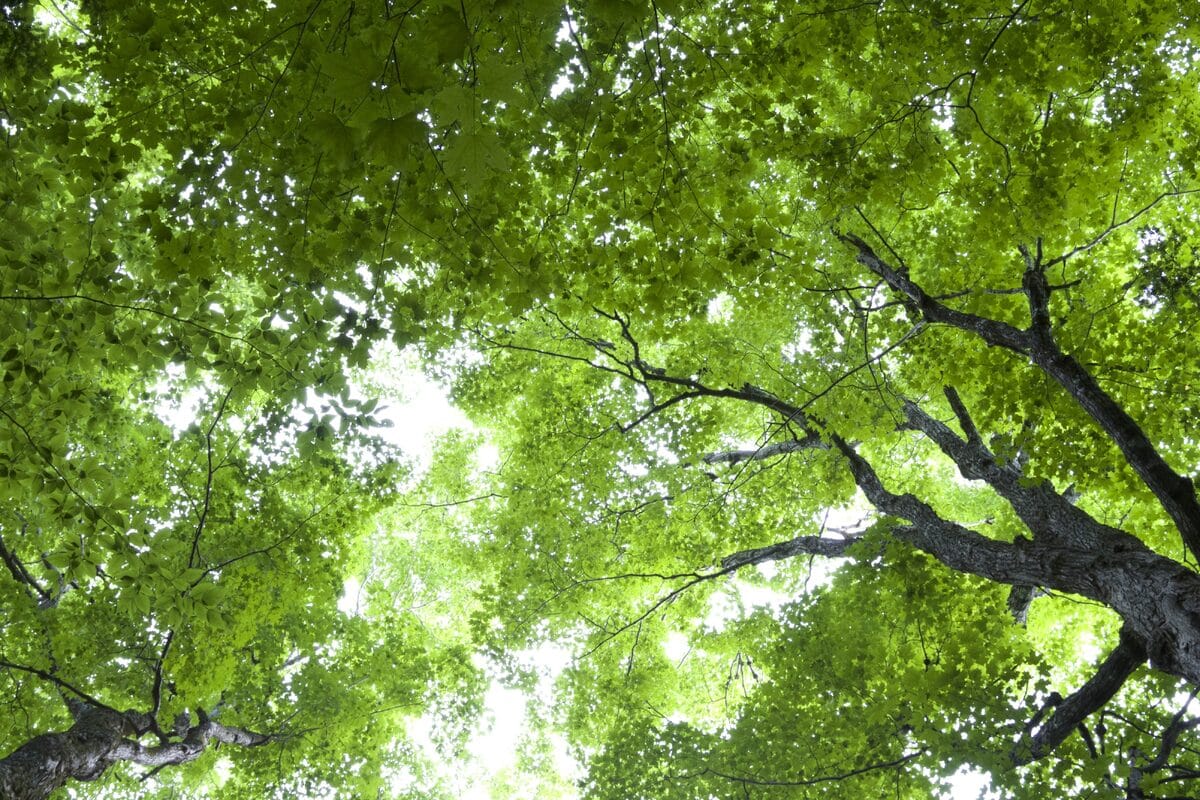
For a very long time, and still today, it is possible to find books in which it is said that palm trees are trees. This is something that can mislead us, since both types of plants have different characteristics, and few similarities beyond the functions they perform to stay alive.
That is why in this article I am going to explain what are the differences between trees and palm trees, with photos, so that you can check them yourself. So if you're curious, stay with me.
Monocot or dicot?
- Seedling of the Washingtonia filifera palm tree. Image sourced from Wikimedia/RickP
- Maple seedling. The cotyledons and the first true leaves are distinguished. Image from https://eudicots.wordpress.com
Monocotyledonous, dicotyledonous… What do these words mean? As well. When the seeds germinate, they may sprout a first leaflet or two. These little leaves are known by the name of cotyledon, and they are the ones that will feed the seedling until the first true leaves sprout.
In the case of palm trees, only one cotyledon sprouts, which is green and elongated in many cases. In fact, it's easy to confuse it with lawn grass.
Trees, on the other hand, have two cotyledons. But the thing is not as simple as this. It goes much further:
Herbs or not?
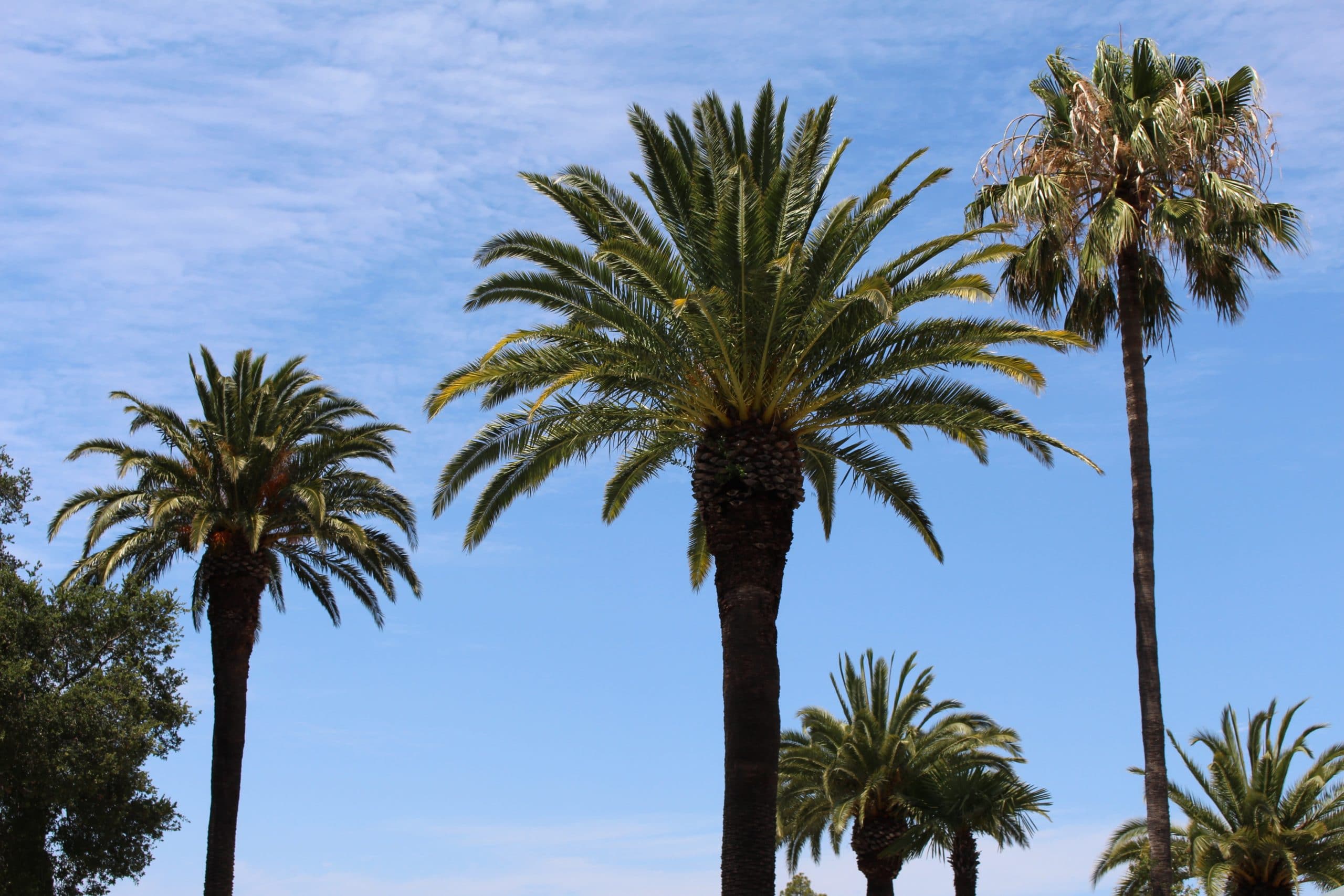
Phoenix and Washingtonia palm trees.
When you think of herbs, small plants with green stems that break easily come to mind. But there are many types of herbs, and some of the most amazing are the giant ones, also known as megaphorbias, including palm trees.
These They are perennial plants (that is, they live for several years) that reach considerable heights, several meters. To give you an idea, the species of palm Ceroxylon quindiuense It can reach 70 meters in height. It's kind of amazing considering they don't develop a true trunk, which brings me to...:
Growth point/s
- Coconut palm (Cocos nucifera)
- Eucalyptus nicholii. The branches are well distinguished. Image sourced from Wikimedia/Geoff Derrin
There are smaller palm trees, others larger,... Some have a stem (called stipe), and others -the least- do not. In the case of those that do develop it, during their youth they slowly lengthen, thickening as they take out new leaves. Once they have reached their maximum diameter, it is when they devote a good part of their energy to growing in height.
But what if they suffer damage to the center of their crown of leaves? If those damages are from its only apical meristem, also called a growth point or guide, it's over. If it is a palm with several stems, which are the result of axillary shoots on the main stem, only the stem that has been damaged will die.
Trees, for their part, have lateral meristems and cambium, thanks to which they can recover from wounds. And in the event that a branch has become useless, it would not be the end of the plants; but lower down they would sprout leaves and, with a bit of luck, new branches.
Roots
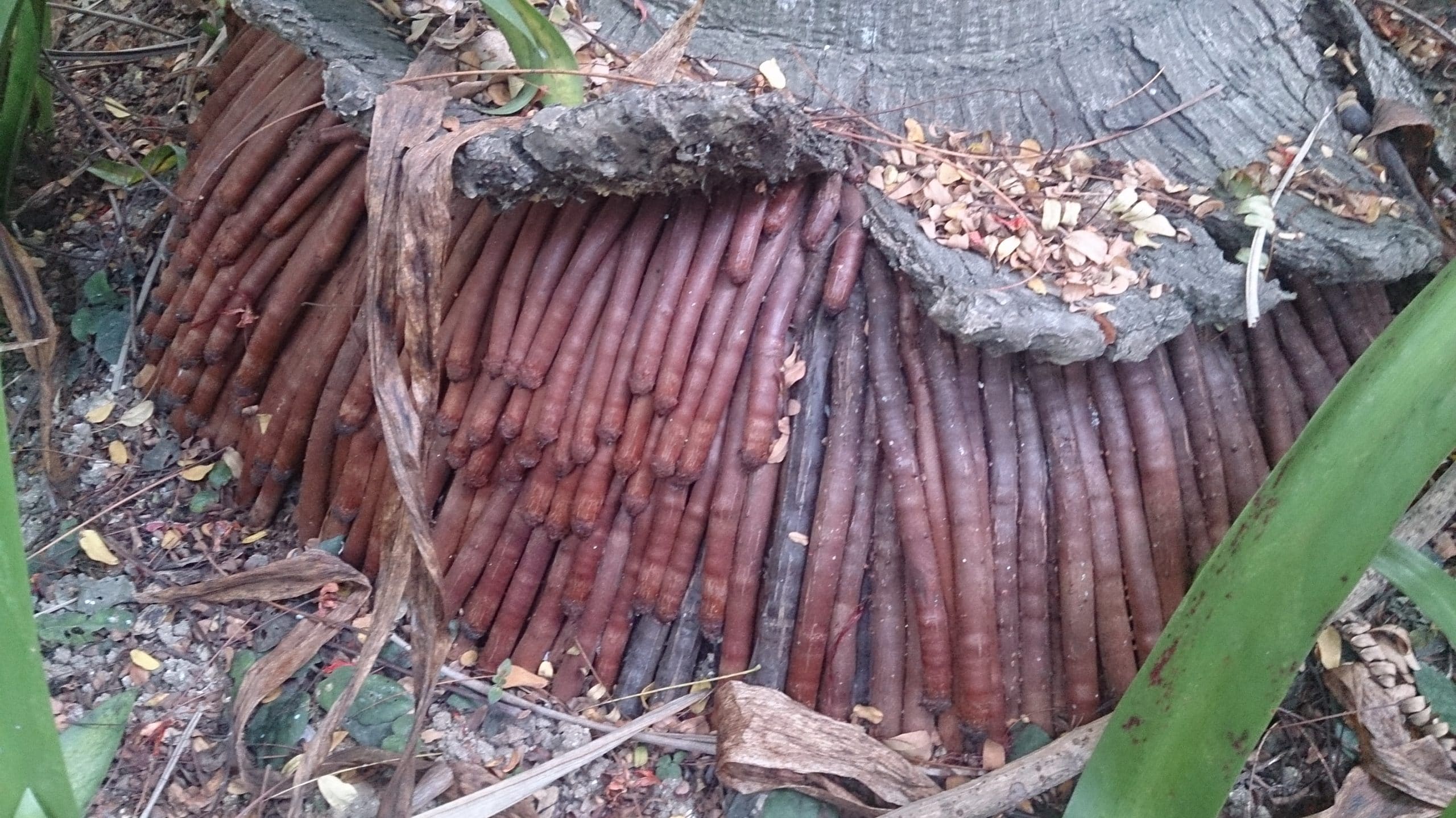
palm tree roots Wodyetia bifurcata. // Image sourced from Wikimedia/Mokkie
Palm tree roots are adventitious. When we speak of adventitious we refer to some types of roots that arise from the same point, which in the case of palm trees is the external region of the central cylinder in which the vessels in the stem or stipe join. Over the years, it may be the case that the palm tree reaches such a volume of roots that the bark splits.
As for its length, it will depend a lot on the species of palm tree and where it is growing. But assuming that the soil is more or less soft, and that they have the moisture and nutrients they need, they can be 15 meters or more in adult specimens.
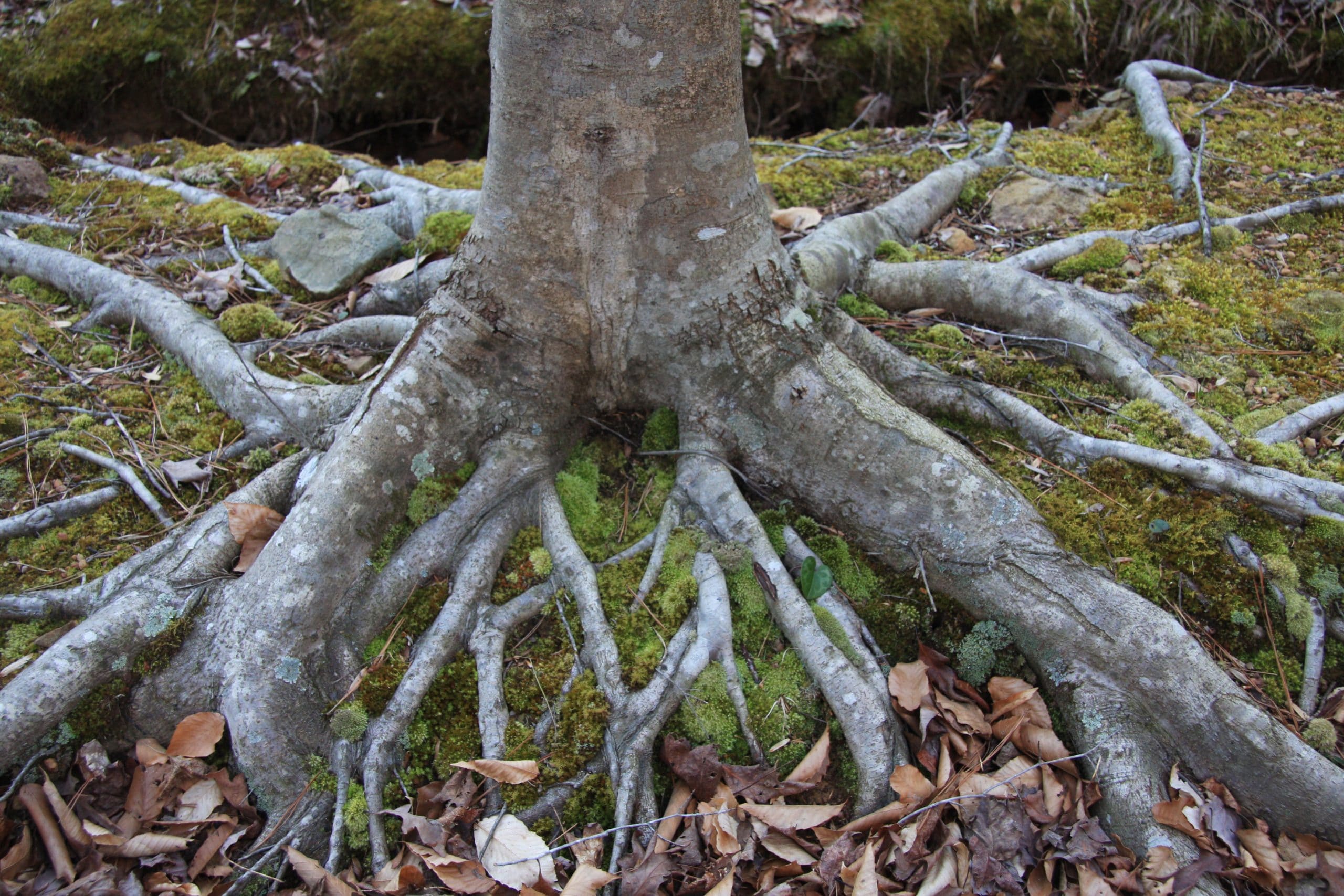
Roots of the Fagus grandifolia tree. // Image from Wikimedia/Dcrjsr
Tree roots are different. In these plants it is usually possible to distinguish a main or pivoting root, which thickens somewhat more than the others, and other much thinner roots. The first is responsible for anchoring the tree to the ground, while the rest are the ones that go in search of water. Also, as they have cambium, those of certain species can be used for grafting.
Leaves
- Pinnate palm leaf.
- Washingtonia have palmate leaves.
- Costapalmate leaf of the Sabal palm tree.
The leaves are, perhaps, what can help you the most to know if what you see is a palm tree or a tree. And it is that those of palm trees can be, in general, of three types: pinnate, costapalmate or palmate.
- Pinnate: they are those with leaflets or pinnate attached perpendicular to the rachis, which is an extension of the petiole.
- Palmada: they are the ones that are fan-shaped.
- Costapalmada: these are normally rounded-oval shaped leaves, intermediate between the two previous ones.
Moreover, those of trees can be, depending on their shape:
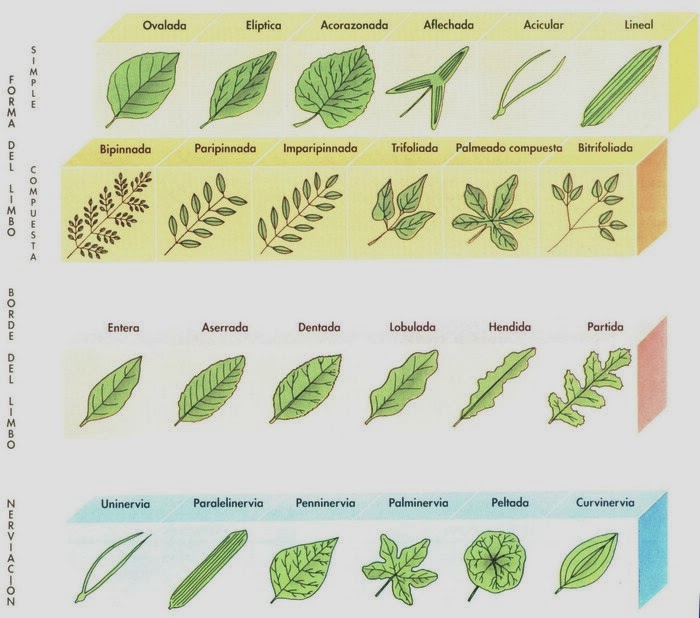
Image from Medium Cone Blog
- Simple: they are those that have the limb attached to the stem or branch, and may have the entire margin, lobed or toothed.
- Compound: they are those that are formed by two or more leaflets that arise from the same axis.
- Bipinnaticomposite: they are similar to the compound ones, but the leaflets, instead of dividing once as in the compound ones, do so twice.
And according to your arrangement:
- Alternate: they are the ones that sprout on both sides of the branch.
- Opposite: they are those that arise from the same point of the branch, but grow in the opposite direction.
- Whorled: they are those that sprout in groups of more than two from the same point.
- Radial: they are those that have a disposition which resembles the shape of a brush.
- In groups: they are similar to the previous ones, but they sprout at the end of very short branches in groups of two or more.
In addition, while the leaves of some trees (generally temperate deciduous) they change their color at some time of the year, the leaves of the palm trees remain always green (except in some like the Chambeyronia macrocarpa, which what it does is take out the new reddish leaf, probably in an attempt to keep it safe from predators. But as it matures, it turns green.)
Flowers
- Syagrus palm tree flowers
- Flowers of a tree of the genus Prunus.
The flowers of palm trees are grouped in more or less branched inflorescences, always. These can sprout from between the leaves, or from the capital (the capital is the union between the crown and the stipe, which some species have, such as those of the Archontophoenix genus). These flowers can be male or female, and appear on the same palm tree if it is monoecious, or in different specimens if it is a dioecious species.
As a curiosity, it is interesting to know that there are hapaxantic palm trees; that is, palm trees that only bloom once in their life, and then die, like the Corypha.
On the other hand, the flowers of the trees can be male or female, appearing in the same specimen or in a different one, although they can also be hermaphroditic (such as those of the olive tree or Olea europaea). Most tree flowers have petals and/or sepals, and are of many different shapes.
As you can see, there are differences between palm trees and trees. Some go unnoticed, but others are remarkable.
What did you think of this topic?



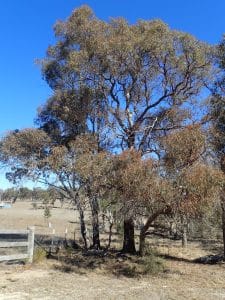



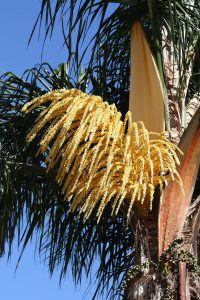

Excellent. Very interesting and complete.
Thank you very much Enzo for your words. I'm glad that you liked it. Greetings!